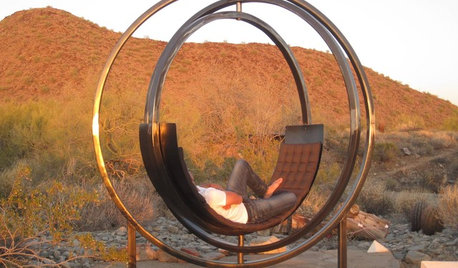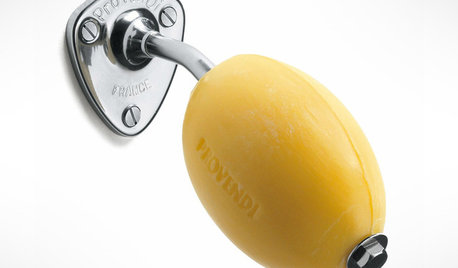Rotation
Mark
9 years ago
Related Stories

THE ART OF ARCHITECTUREArchitect's Toolbox: Rotated Squares and Diagonals in Design
Geometric play accents a space and emphasizes a home's best features
Full Story
BEDROOMSSpace Saver: Rotate the Bed
Try putting the long side of the bed against the wall for a more flexible furniture arrangement
Full Story
CEILINGSIn the Rotation: Ceiling Fans Go Chic
Who Knew Ceiling Fans Could be Lust-Worthy? Here's How to Stay Cool in Style
Full Story
STORAGEWatch an Innovative Bookcase Convert Before Your Eyes
Judge the problem-solving ability of these rotating shelves for yourself, but we think it’s an open-and-shut case
Full Story
COLLECTIONSPut Your Collection on Show
Curate Your Own Rotating Exhibit on Wall, Tabletop, Cabinet or Floor
Full Story
KITCHEN DESIGNKitchen Storage Solutions for Every Nook
No kitchen spot is too small to use wisely with corner drawers, rotating shelves, Lazy Susans and more
Full Story
HOUSEKEEPINGTo-Dos: Your May Home Checklist
Dig out that touch-up paint and rotate that mattress in preparation for the lazy days of summer
Full Story
GARDENING AND LANDSCAPINGIs It a Gyroscope or Sculpture? Nope, It’s a Chair
With an inner ring that rotates 360 degrees, this student-designed seat is positioned to turn some heads
Full Story
HOUSEKEEPINGHow to Clean and Care for Your Mattress
See what the experts recommend to protect your mattress from dust, moisture and stains
Full Story
BATHROOM VANITIESBetter Places to Stash That Soap
Banish gloppy bars and flimsy pumps, and the only things you’ll need to clean are your hands
Full StorySponsored






jrslick (North Central Kansas, Zone 5B)
little_minnie
Related Professionals
Canton Landscape Architects & Landscape Designers · Fitchburg Landscape Architects & Landscape Designers · Panama City Landscape Architects & Landscape Designers · Saint Matthews Landscape Architects & Landscape Designers · Dedham Landscape Contractors · Dunwoody Landscape Contractors · St. Louis Landscape Contractors · Tuscaloosa Landscape Contractors · West Orange Landscape Contractors · Wickliffe Landscape Contractors · Hueytown Landscape Contractors · Cerritos Solar Energy Systems · Champlin Solar Energy Systems · North Tustin Solar Energy Systems · Azalea Park Solar Energy Systemslittle_minnie
AuSable Valley Woodworks
Slimy_Okra
boulderbelt
2ajsmama
randy41_1
little_minnie
randy41_1
2ajsmama
Slimy_Okra